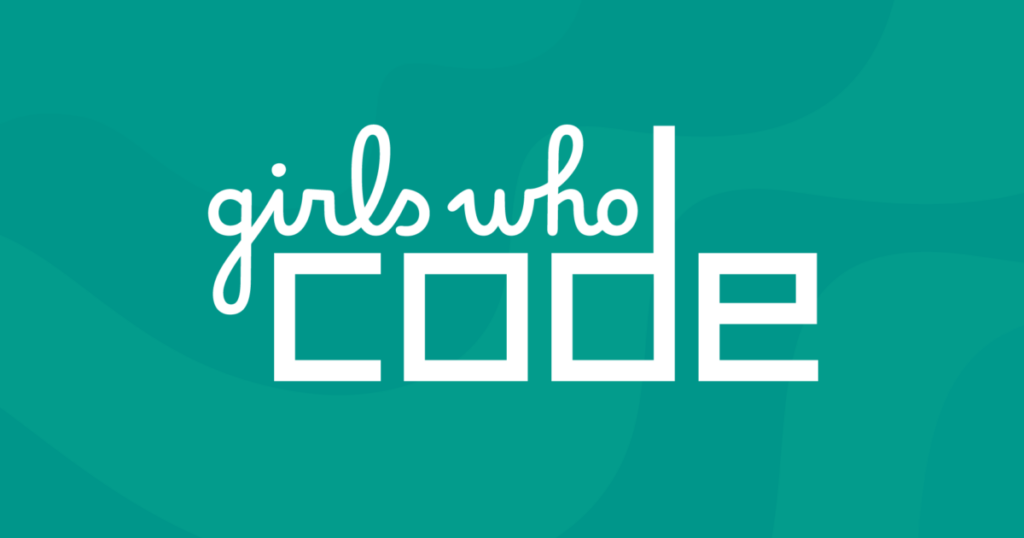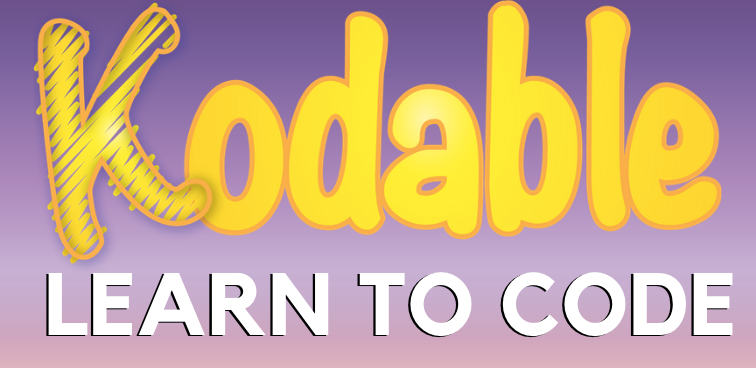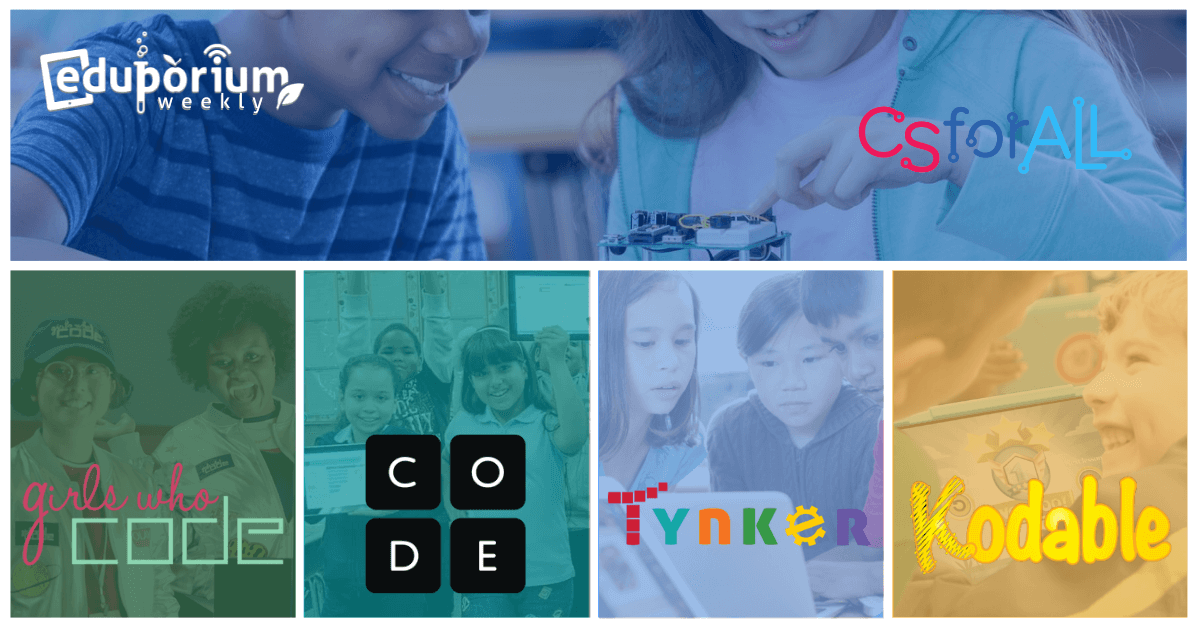As educators in the 21st century, today’s school leaders are always looking for help and we realize that. We try to offer teachers as much support as possible throughout each phase of their EdTech acquisition. We're not the only ones, however, in this business of making technology acquisition and deployment easier on all educators (obviously). In fact, much of what we know, we’ve learned from watching others do successfully. This week, we’ll discuss some of the best STEAM and coding resources for teachers to read, explore, use, and, at the very least, know about. Whether you'd love additional insights into key benefits of technology in education or ideas for enhancing classroom learning, these names are some you won’t want to forget.
CS for All
It’s a constant in education that advocates, teachers, and also students are pushing for—getting computer science education to everyone. CS for All (Computer Science for All) is an organization that is committed to doing just that. They know—like many members of the education community—that computer science is an increasingly important component in modern education. And, they also know that teachers can incorporate it into instruction at any grade level—so long as themselves and their school leaders have the tools and the insights for doing so effectively. They are committed to providing help for afterschool club leaders, Higher Ed faculty members, school curriculum directors, educators, and students. Starting more locally, they also help school leaders learn to deliver computer science education and expose more students to it.
Ultimately, they want to ensure that kids can take part in computer science courses that provide equitable experiences for everybody. If one child can benefit from CS, then everybody should also be able to benefit from it, right? Their message seems simple, but it’s a very important one to remember. Aside from creating in-class computer science experiences for teachers and students, CS for All is also committed to boosting nationwide support for computer science education through various initiatives as they highlight the work that educators have done with their students. They've truly built up a community of innovators who design educational experiences geared towards the future. And, they've done all that while advancing a collective mission of making high-quality CS experiences commonplace in the K-12 curriculum.
They offer a slew of specific projects and programs for advancing computer science development among kids. Some of them include helping all school leaders with their CS education planning, defining computer science education values, and providing initial consultation. They also want to make sure communities are always moving forward and they'll provide support to school communities, too. They’ve launched projects challenging school and district leaders to commit to expanding CS access for their students, identify any opportunities to increase their ability to teach computer science, and define and address those key issues related to K-12 computer science education today. In just a couple years, CS for All grew into a household name in K-12 STEM education. And, as the importance of coding keeps expanding, it remains a fantastic resource. From teachers and principals to superintendents, they'll help anyone add CS into the curriculum.
Girls Who Code
There's often a bunch of buzz around the Girls Who Code organization as they help provide opportunities for females of every age, including those who might typically be underrepresented in STEM, to take part in crucial learning opportunities and experiences that will help them better prepare for the future. Since being founded by Reshma Saujani in 2012, they've worked with almost 100,000 young women to create chances to code. They've become a household name around the STEM world, with people working tirelessly to help increase female representation in tech. They've worked with and received funding from some of the world’s most well-known companies too. This includes AT&T, Walmart, Bank of America, Groupon, Accenture, AIG, Amazon, Google, Microsoft, Uber, and others.
They offer a few different programs to get girls of all ages more involved in coding and STEM experiences. Since high school is a crucial time in the decision making process for all students, one of their programs is geared towards high school juniors who are going to enter their senior years or sophomores who are going to become juniors. Their free 7-week introductory course is available for prospective juniors and seniors to learn more about computer science, see what tech jobs are like, and become a part of a group committed to fostering equity among women in STEM. The organization's even committed to using computer science as a vehicle to create change in school communities. They'll share messages about how female adults can empower girls—with proper instruction and tools—to make impacts with technology.
Their team helps anybody running programs offer computer science instruction to girls through real-world projects. Whether in art, storytelling, robotics, video game design, or something else, they can use coding in so many different ways and learn about it from a young age to get ready for their future. Many programs last a few weeks and culminate with final collaborative challenges to create something that sparks change. Like we've said, these programs promote the importance of sisterhood, community, and togetherness and expose girls to tomorrow’s brightest careers. Opportunities could even include field trips to various STEAM facilities, workshops, guest speakers, and more to inspire all female participants. To learn more about the Girls Who Code organization or to find a local chapter, visit their website!

Code.org
With praising the efforts of the Girls Who Code team, we’d be remiss not to note another hugely influential company. Code.org is a nonprofit organization committed to expanding access to K-12 computer science education for kids. They became a household name after helping to make their annual Computer Science Education Week a staple in countless schools. Their team has been instrumental in this initiative, which is simply intended to encourage teachers and school leaders to give their students the chance to try various coding activities during this week-long event or amidst one of their many Hour of Code initiatives during which students can simply take part in brief computer science experiences. Like everyone from Girls Who Code, they work to expand STEM opportunities and give underrepresented groups an equal chance.
The Code.org mission is simple. They want to ensure that every student has the chance to learn computer science in the same way that they have the opportunity to learn traditional academic subjects, like biology, algebra, social studies, or even chemistry. In today’s climate, that ability to code is essentially as pivotal as learning the skills associated with the other subjects we just mentioned was 15 or 20 years ago. Of course, now computer science is where great jobs are and where we expect them to remain. Keeping the statistics largely available, the Code.org curriculum provides resources for teaching K-12 computer science during your regular school day. Educators worldwide keep adopting this curriculum and, as coding becomes even more vital, we should only expect it to rise. To date, 15 percent of the world’s students have participated in an Hour of Code event, illustrating its impact.
In order to increase computer science diversity, they've made it their mission to reach students at the level they’re at. Meeting them at their skill levels is how they help keep kids engaged while not intimidating them or rushing them into anything too overwhelming. This method proves to keep students inspired while often helping them master core concepts before moving to more challenging ones. Thanks to Code.org founder, Hadi Partovi, countless students have had a chance to experience structured coding challenges within the classroom, and the amount of diversity in computer science is slowly beginning to increase. To learn more about Code.org, Computer Science Education Week, and how to bring in-depth coding curricula into your school or district, we encourage you to check them out!
Tynker
There seems to be a theme among the focus areas for some of the most effective STEAM organizations in the mix today. And, that theme would be coding. Coding is so important to the futures of our students that many parents, educators, school leaders, and professionals believe they should start out practicing coding in one way or another as early on as Pre-K, kindergarten, or first grade. That’s where Tynker comes in. They help unlock opportunities for bringing age-appropriate coding into early education through their engaging and simplified offerings. They also help make programming introduction easy for elementary teachers and believe kids could be coding by seven years old. Whether that is block coding or something more complex as they build up the skills, Tynker makes it so that kids only need a computer and an Internet connection to take part in some authentic coding.
It’s free to create a Tynker account and, within their environment, students can try block or text coding. The various challenges include controlling toys, making apps, building games, and, of course, a chance to learn different coding languages. As they say, the Tynker team believes that kids should learn coding using visual blocks that represent authentic programming concepts. They also feel that coding is more of a game than something that’s intimidating. And, when they put it like that, teaching programming at an early age doesn’t sound too overwhelming at all. Kids can learn the foundation of programming languages like Blockly, Swift, JavaScript, HTML/CSS, and Python on the Tynker site. Plus, these activities steer kids towards developing important 21st century skills, like problem solving, collaboration, resilience, focus, and creativity as they all work and play.
Educators around the world have used Tynker in their EarlyEd classrooms as they enjoy its easy integration and variety of coding activities. That variety allows teachers to work with kids of all different skill levels from very new to coding to advanced. Over 60 million kids all around the world have created well over 14 million apps and written over four billion lines of code on Tynker so far, which we find incredible. The courses even allow kids to progress through the challenges at a pace that’s right for how they learn. We're also pretty big proponents of self-paced learning and believe this is a great wrinkle for the Tynker website. Whether you’re looking for something new for in-school, afterschool, or camp curricula, Tynker is something to check out.

Kodable
Okay, so all of the cool STEM organizations we are going to talk about are involved with advancing coding and computer science in K-12 schools. The last one on our list is Kodable, a team who works with various elementary educators to make learning programming fun for kids. Kodable is great for inside or outside of the classroom and includes over 160 levels of coding games and challenges for kids. Another nice feature is that it provides teachers or parents with updates on the progress that students are making. It also offers instructional videos and other resources that they can use to learn together with students. Everything from simple problem solving to JavaScript coding is available within Kodable. Plus, there are different plans for both educators and parents, which are affordable or, in some cases, free.
One reason to give Kodable a try is that children could learn logic and problem solving while programming. They can design and build their own games, and write real JavaScript code. Of course, these all help them take part in some beneficial programming experiences, and help them prepare for taking their CS prowess to the next step. They also offer 7-day trial periods for anyone who wants to see what it’s like. This enables their members to choose from a monthly membership or a year-long membership. Whichever membership option you choose, you can access parent resources, player profiles, advanced levels, the introduction to JavaScript, the chance to build your own games, and more.
In addition to exposing kids to coding, Kodable can help them to grasp real-world concepts in an effective manner. They'll develop computational thinking, communication, social-emotional learning, and, of course, programming skills—all of which are extremely beneficial to kids. Additionally, they are committed to these coding activities delivering results rather than keeping students occupied. By breaking down some basics, it helps kids build foundational CS skills for use throughout their lives. Coding with Kodable helps teachers to provide children with a thorough curriculum. They can also access it all in one place and engage in what they truly enjoy. And, that's what will help them make true progress in developing programming skills.
For the latest EdTech, STEM, and 21st century education news, follow us on Twitter and Instagram. Like us on Facebook, too, or sign up for our newsletter for our latest product announcements and offerings. If you have an idea for an Eduporium Weekly theme, send us a message on social media or comment below.



